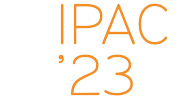Speaker
Description
The modeling of current and next-generation particle accelerators is a complex endeavour, ranging from the simulation-guided exploration of advanced lattice elements, over design, to commissioning and operations.
This paper explores hybrid beamline modeling, towards coupling s-based particle-in-cell beam dynamics with machine-learning (ML) surrogate models.
As a first example, we train a surrogate model of an advanced accelerator element, a laser-wakefield accelerator stage, via the time-based particle-in-cell code WarpX [1].
A second example trains trains a model for the IOTA nonlinear lens via the s-based code ImpactX [2].
Funding Agency
Work supported by the Exascale Computing Project (17-SC-20-SC), a collaborative effort of the U.S. DOE Office of Science and the NNSA, and by LBNL LDRD under DOE Contract DE-AC02-05CH11231.
Footnotes
- L. Fedeli et al., SC22, 978-1-6654-5444-5, pp. 25-36 (2022)
** A. Huebl et al., NAPAC22, arXiv:2208.02382 (2022)
| I have read and accept the Privacy Policy Statement | Yes |
|---|

